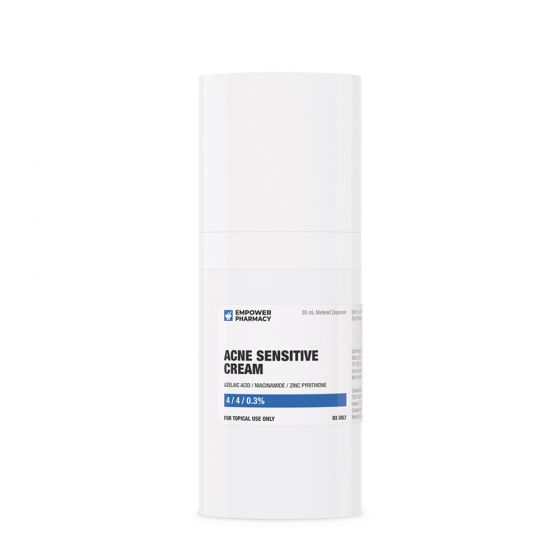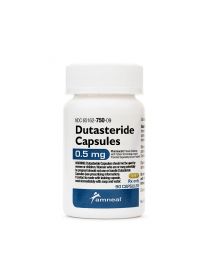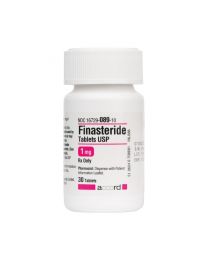- Home
- About
-
- < Products
-
- < By Brand
- Alastin Skincare
- AMP medical
- Biopelle
- CALECIM®
- CareFirst Specialty Pharmacy
- CLn Skin Care
- CO2Lift
- EltaMD
- Empower Pharmacy
- Glowbiotics
- Hillcrest Pharmacy
- HydroPeptide
- ISDIN
- Jan Marini
- Latisse
- MMSkincare
- Neocutis
- Nutrafol
- Obagi
- PCA Skin
- PHOTOZYME
- Qyksonic
- Revision Skincare
- Sente
- skinbetter science
- SkinCeuticals
- SkinMedica
- Upneeq
- VANIQA®
- Virtue Labs
-
- < By Product Type
- Acne Scarring
- Acne Treatments
- Anti-Aging
- Bath and Body
- Brightening
- Cleansers
- Eye Treatments
- Exfoliants
- Hair Care
- Hair Regrowth
- Hand Treatments
- Injectable
- Kits
- Lip Treatments
- Masks
- Moisturizers
- Neck Treatments
- Redness & Rosacea
- Retinoids & Exfoliants
- Scarring & Post-Procedure
- Thin Lashes
- Serums
- Skin Rejuvenation & Antioxidants
- Dietary Supplements
- Toners
- Sun Protection
- Contact Us
- Sign In
- Sign Up
Azelaic Acid
Azelaic acid is a topical anti-acne agent. Azelaic acid is a naturally occurring dietary constituent (whole grain and animal products) and can be formed endogenously from longer-chain dicarboxylic acids, metabolism of oleic acid, and omega-oxidation of monocarboxylic acids. Azelaic acid is used as a treatment for acne vulgaris and is one of the leading treatments for this condition in Europe where it has been marketed as a 20% cream since 1989 by Schering. The drug is also effective in reducing the number of inflammatory pustules and papules associated with rosacea. Reduction in erythema may occur; however, efficacy has not been established for erythema associated with rosacea without papules and pustules. Azelaic acid has been administered orally and intravenously; however, only a topical formulation is marketed in the United States. The drug was originally FDA approved as a 20% cream for the treatment of acne vulgaris in September 1995; several brand name creams are now available. A 15% topical gel and foam were FDA-approved for the treatment of rosacea in December 2002 and July 2015, respectively.
Niacinamide
Niacin (nicotinic acid or 3-pyridinecarboxylic acid) is a B-complex vitamin. Good dietary sources of niacin are animal proteins, beans, green vegetables, liver, mushrooms, peanuts, whole wheat, and unpolished rice. Niacin is also present in cereal grains but is largely bound to plant proteins, and thus is poorly absorbed after ingestion. Niacin is one of the substances used in the enrichment of refined flour, and our dietary intake of pre-formed niacin comes primarily from enriched grains. However, the body's niacin requirement is also met by the biosynthesis of niacin from tryptophan, an amino acid. For example, milk and eggs do not contain niacin, but do contain large amounts of tryptophan from which niacin is derived. Each 60 mg of excess tryptophan (after protein synthesis) is converted to approximately 1 mg of niacin. Synthesis of the vitamin from tryptophan in proteins supplies roughly half the niacin requirement in man. Iron deficiency or inadequate pyridoxine or riboflavin status will decrease the conversion of tryptophan to niacin and may contribute to deficiency, due to interdependence of coenzymes in the niacin production pathway. A late and serious manifestation of niacin deficiency is pellagra, a clinical symptom complex principally affecting the GI tract, skin, and CNS, producing symptoms of diarrhea, dermatitis, and dementia, respectively. Pellagra may result from niacin- and protein-deficient diet, isoniazid therapy, or certain diseases that result in poor utilization of tryptophan. Pellagra was the only vitamin-deficiency disease to ever reach epidemic proportions in the US; pellagra is rare today in industrialized countries due to the enrichment of refined flours.
Several synonyms for niacin and niacinamide exist. Synthetic niacin could be produced by the oxidation of nicotine, and the term 'nicotinic acid' evolved. Scientists also coined the terms 'nicotinamide' and 'niacinamide' for the amide form of nicotinic acid. The term 'niacin' has been used generically since the 1940s to label foods and to avoid the association of the vitamins with the nicotine alkaloid from tobacco. Thus, the name 'niacin' has been used to denote both chemical forms, which are equivalent to vitamins on a weight basis. Both nicotinic acid and nicotinamide are synthesized for inclusion in nutritional supplements. However, since nicotinic acid and nicotinamide have different pharmacologic properties outside of their use as vitamins, it is important to distinguish between the two forms in pharmaceutical products.
In clinical medicine, nicotinic acid is used as an antilipemic, but nicotinamide (niacinamide) is not effective for this purpose. Nicotinic acid was the first hypolipidemic agent shown to decrease the incidence of secondary myocardial infarction (MI) and reduce total mortality in MI patients. However, no incremental benefit of coadministration of extended-release niacin with lovastatin or simvastatin on cardiovascular morbidity and mortality over and above that demonstrated for extended-release niacin, simvastatin, or lovastatin monotherapy has been established. In addition, the AIM-HIGH trial demonstrated that the concurrent use of extended-release niacin (1500—2000 mg/day PO) and simvastatin does not result in a greater reduction in the incidence of cardiovascular events than simvastatin alone.4 These results are consistent with those of the larger HPS2-THRIVE trial in which the addition of extended-release niacin to effective statin-based therapy did not result in a greater reduction in the incidence of cardiovascular events. Furthermore, there was an increased risk of serious adverse events including an increased incidence of disturbances in diabetes control and diabetes diagnoses, as well as serious gastrointestinal, musculoskeletal, dermatological, infectious, and bleeding adverse events. There was also a statistically insignificant 9% proportional increase in the incidence of death from any cause in the niacin group.5 The ARBITER 6-HALTS trial demonstrated that the addition of extended-release niacin 2000 mg/day to statins results in significant regression in atherosclerosis as measured by carotid intima-media thickness, and is superior to the combination of ezetimibe and a statin.6 In an MRI study, the addition of extended-release niacin 2000 mg/day to statin therapy resulted in a significant reduction in carotid wall area compared to placebo.7 However, the NIA Plaque study, which was presented at the American Heart Association (AHA) 2009 Scientific Sessions, did not find a significant reduction in the progression of atherosclerosis associated with the addition of niacin to statin therapy as compared to statin monotherapy. Additionally, nicotinic acid has been used as a therapy for tinnitus, but efficacy data are scant. Some sustained-release nicotinic acid formulations have a lower incidence of flushing but a higher incidence of hepatotoxicity when compared to immediate-release forms.8 Some dosage forms are available without a prescription. The FDA officially approved niacin in 1938.
Zinc Pyrithione
Zinc is a trace element. Zinc is distributed throughout the plant and animal kingdoms, second in abundance only to iron. As a trace element, zinc is essential for biologic functions and, in animals, is important in growth, appetite, testicular maturation, skin integrity, mental activity, wound healing, and immunocompetence. Zinc deficiency first identified clinically in 1963 in young males in Iran and Egypt, is associated with diets high in unrefined cereal and unleavened bread, total parenteral nutrition (TPN), intestinal disease (i.e., Crohn's disease, pancreatic insufficiency), alcoholism, pregnancy, or in acrodermatitis enteropathica, an autosomal recessive disease characterized by zinc malabsorption. Commercially available zinc salts include zinc acetate, zinc chloride, zinc gluconate, zinc oxide, and zinc sulfate. Zinc sulfate, administered orally or parenterally, is the most common form of zinc used when a nutritional supplement is needed; it is the salt found in zinc-containing multivitamin preparation. Zinc sulfate is also used as an ophthalmic solution for mild ocular irritation. Zinc chloride is sometimes also used for IV nutritional supplementation; oral administration of zinc chloride is associated with significant nausea. Zinc lozenges and zinc nasal spray are purported to treat symptoms of the common cold; however, in June 2009, the FDA issued a MedWatch alert advising patients and health care professionals to discontinue the use of Zicam intranasal products due to more than 130 reports of loss of sense of smell (anosmia) which may be permanent or long-lasting. Zinc oxide is a mild astringent with weak antiseptic properties and is applied topically as a sun-blocking agent to treat dermatologic conditions such as abrasions, burns, chafing, diaper rash, and minor skin irritations. Additionally, the antifungal compound zinc undecylenate and the antibacterial agent bacitracin zinc contain zinc as an astringent. Zinc is also used to stabilize insulin preparations such as protamine insulin. Zinc acetate is used topically as a non-prescription agent to treat poison ivy and related Rhus dermatitis. Most recently, oral zinc acetate (Galzin) was granted FDA approval on January 29, 1997, for the oral treatment of Wilson's disease (hepatolenticular degeneration) and is the only prescription-only zinc product.
| Brand | Empower Pharmacy |
|---|
Write Your Own Review
acne treatment
Azelaic Acid / Niacinamide / Zinc Pyrithione 4/4/0.3%












